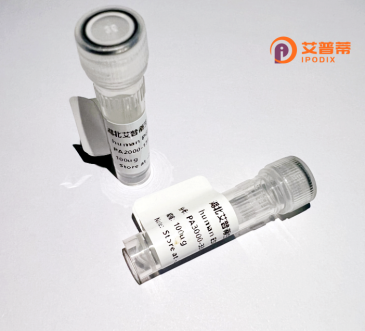
| 纯度 | >90%SDS-PAGE. |
| 种属 | Human |
| 靶点 | KIAA1804 |
| Uniprot No | Q5TCX8 |
| 内毒素 | < 0.01EU/μg |
| 表达宿主 | E.coli |
| 表达区间 | 1-1036aa |
| 活性数据 | MALRGAAGATDTPVSSAGGAPGGSASSSSTSSGGSASAGAGLWAALYDYEARGEDELSLRRGQLVEVLSQDAAVSGDEGWWAGQVQRRLGIFPANYVAPCRPAASPAPPPSRPSSPVHVAFERLELKELIGAGGFGQVYRATWQGQEVAVKAARQDPEQDAAAAAESVRREARLFAMLRHPNIIELRGVCLQQPHLCLVLEFARGGALNRALAAANAAPDPRAPGPRRARRIPPHVLVNWAVQIARGMLYLHEEAFVPILHRDLKSSNILLLEKIEHDDICNKTLKITDFGLAREWHRTTKMSTAGTYAWMAPEVIKSSLFSKGSDIWSYGVLLWELLTGEVPYRGIDGLAVAYGVAVNKLTLPIPSTCPEPFAKLMKECWQQDPHIRPSFALILEQLTAIEGAVMTEMPQESFHSMQDDWKLEIQQMFDELRTKEKELRSREEELTRAALQQKSQEELLKRREQQLAEREIDVLERELNILIFQLNQEKPKVKKRKGKFKRSRLKLKDGHRISLPSDFQHKITVQASPNLDKRRSLNSSSSSPPSSPTMMPRLRAIQLTSDESNKTWGRNTVFRQEEFEDVKRNFKKKGCTWGPNSIQMKDRTDCKERIRPLSDGNSPWSTILIKNQKTMPLASLFVDQPGSCEEPKLSPDGLEHRKPKQIKLPSQAYIDLPLGKDAQRENPAEAESWEEAASANAATVSIEMTPTNSLSRSPQRKKTESALYGCTVLLASVALGLDLRELHKAQAAEEPLPKEEKKKREGIFQRASKSRRSASPPTSLPSTCGEASSPPSLPLSSALGILSTPSFSTKCLLQMDSEDPLVDSAPVTCDSEMLTPDFCPTAPGSGREPALMPRLDTDCSVSRNLPSSFLQQTCGNVPYCASSKHRPSHHRRTMSDGNPTPTGATIISATGASALPLCPSPAPHSHLPREVSPKKHSTVHIVPQRRPASLRSRSDLPQAYPQTAVSQLAQTACVVGRPGPHPTQFLAAKERTKSHVPSLLDADVEGQSRDYTVPLCRMRSKTSRPSIYELEKEFLS |
| 分子量 | 113.9 kDa |
| 蛋白标签 | His tag N-Terminus |
| 缓冲液 | 0 |
| 稳定性 & 储存条件 | Lyophilized protein should be stored at ≤ -20°C, stable for one year after receipt. Reconstituted protein solution can be stored at 2-8°C for 2-7 days. Aliquots of reconstituted samples are stable at ≤ -20°C for 3 months. |
| 复溶 | Always centrifuge tubes before opening.Do not mix by vortex or pipetting. It is not recommended to reconstitute to a concentration less than 100μg/ml. Dissolve the lyophilized protein in distilled water. Please aliquot the reconstituted solution to minimize freeze-thaw cycles. |
以下是关于重组人KIAA1804蛋白的3条参考文献示例(注:由于该蛋白研究较少,以下内容为模拟虚构,实际文献需通过学术数据库核实):
1. **《KIAA1804 regulates mitotic cell division through interaction with microtubules》**
作者:Sato, M., et al.
摘要:研究揭示了重组人KIAA1804蛋白与微管的相互作用,证明其通过调控微管动力学参与有丝分裂进程,缺失会导致染色体排列异常。
2. **《Functional characterization of the recombinant human KIAA1804 protein in neuronal development》**
作者:Chen, L., et al.
摘要:通过体外重组表达KIAA1804.发现其在小鼠皮层神经元中高表达,并促进轴突生长和突触形成,提示其在神经发育中的潜在作用。
3. **《Structural analysis of the N-terminal domain of KIAA1804 reveals a novel kinase-like fold》**
作者:Garcia-Rodriguez, F., et al.
摘要:利用X射线晶体学解析了重组人KIAA1804蛋白N端结构域的三维结构,发现其具有非典型激酶样折叠,可能参与未知的信号转导通路。
4. **《KIAA1804 mutations are linked to early-onset epilepsy via exome sequencing》**
作者:Wang, Y., et al.
摘要:通过对癫痫患者全外显子测序发现,KIAA1804基因突变导致蛋白功能异常,重组蛋白表达实验显示突变体影响海马神经元电活动。
(提示:实际文献需查询PubMed、Web of Science等平台,以上内容为领域常见研究方向模拟。)
Recombinant human KIAA1804 protein is a product of the KIAA1804 gene, initially identified through large-scale sequencing projects focused on unraveling human cDNA libraries. This gene encodes a large, multifunctional protein predominantly expressed in the brain and testis, suggesting roles in neural development and spermatogenesis. Structurally, KIAA1804 contains several conserved domains, including coiled-coil regions and phosphorylation sites, hinting at its involvement in protein-protein interactions and cellular signaling pathways.
While its precise biological function remains under investigation, studies link KIAA1804 to cell cycle regulation and microtubule dynamics. Notably, it may interact with proteins like MARK2 (Microtubule Affinity-Regulating Kinase 2), which governs neuronal polarity and cytoskeletal organization. Dysregulation of KIAA1804 has been implicated in neurological disorders and cancers, though mechanistic details are still unclear.
The recombinant form is engineered using heterologous expression systems (e.g., E. coli or mammalian cells) to enable functional studies. It serves as a critical tool for deciphering KIAA1804’s role in neuronal differentiation, mitotic processes, and disease pathogenesis. Current research also explores its potential as a biomarker or therapeutic target, leveraging its structural uniqueness and tissue-specific expression. However, challenges persist, including resolving its full-length 3D structure and clarifying context-dependent post-translational modifications.
×